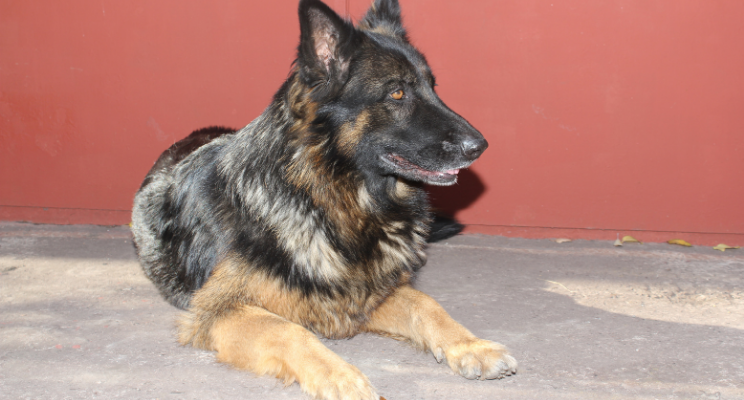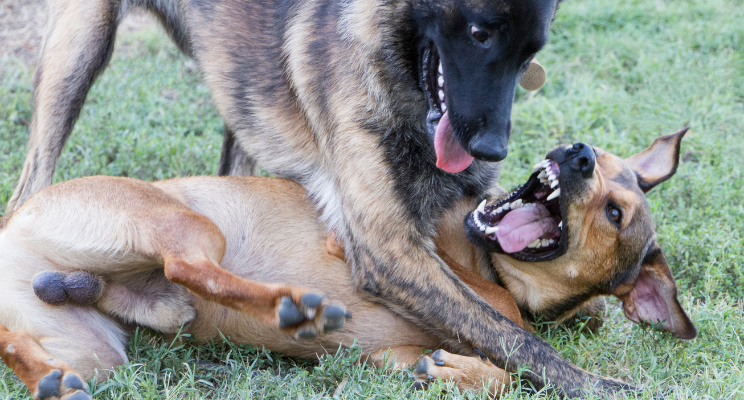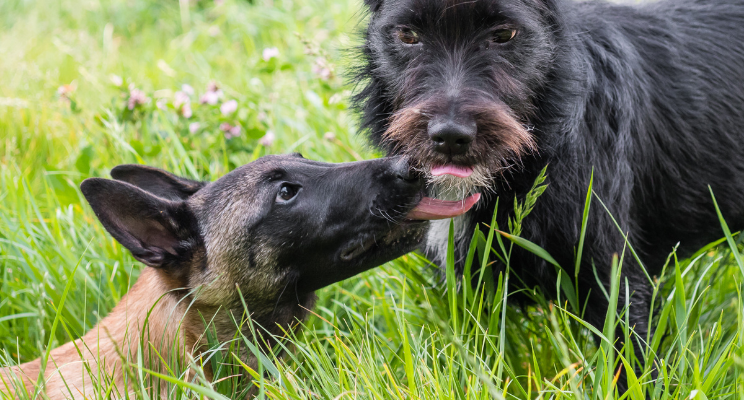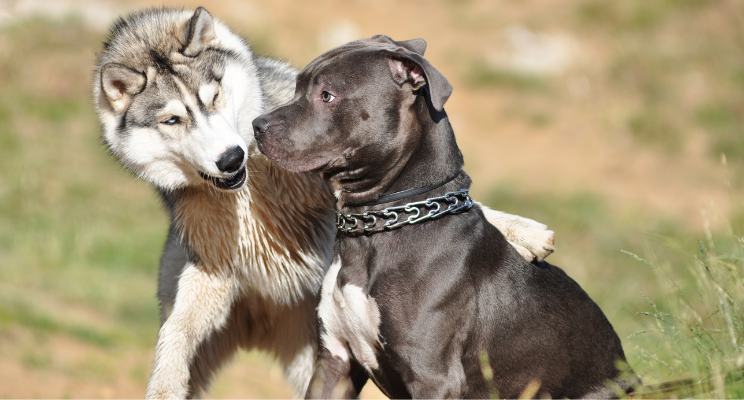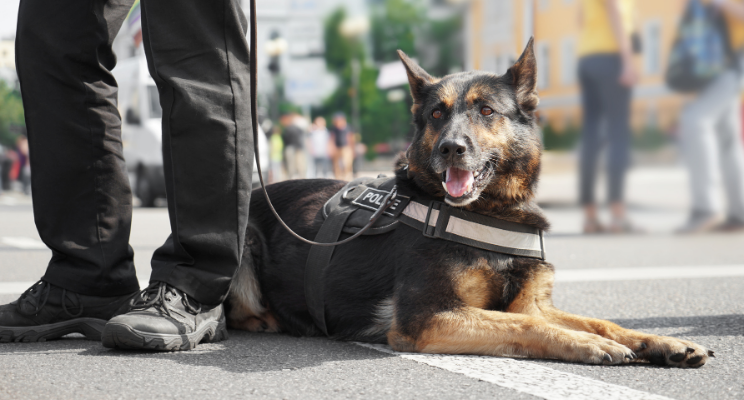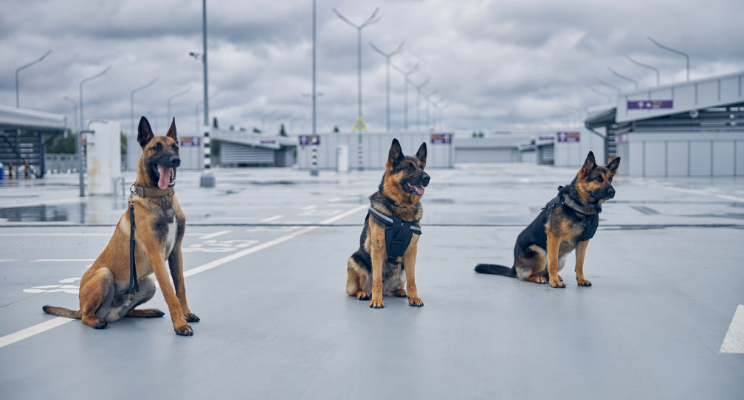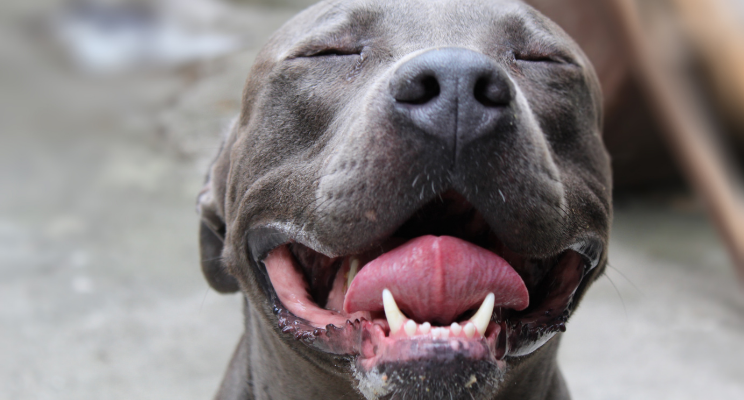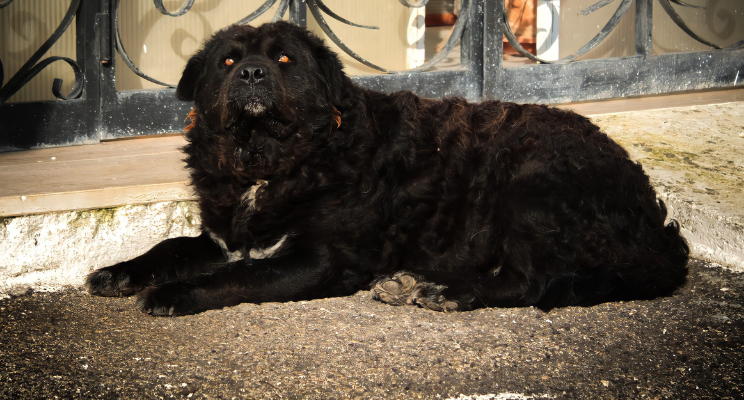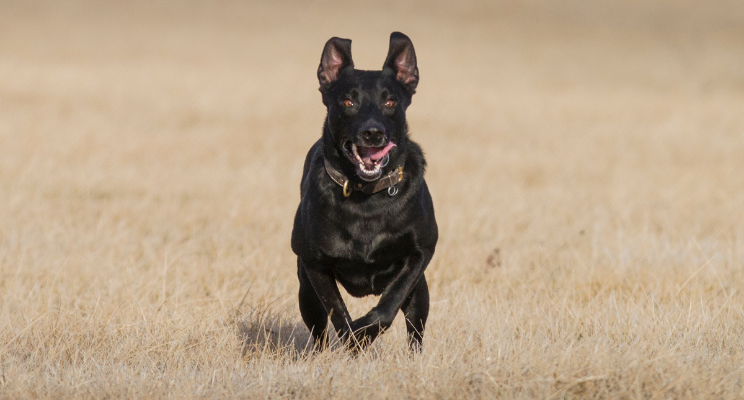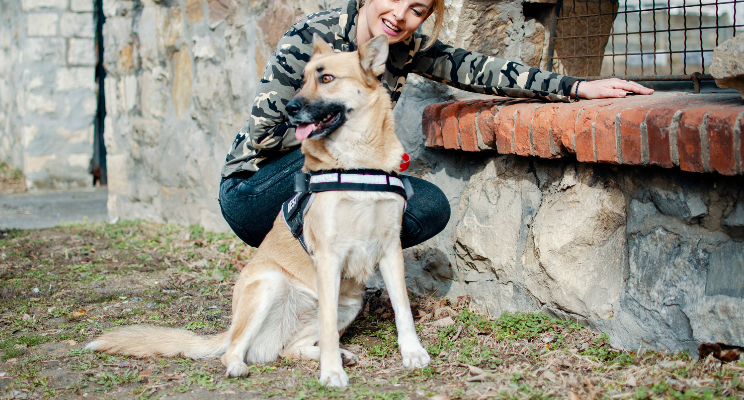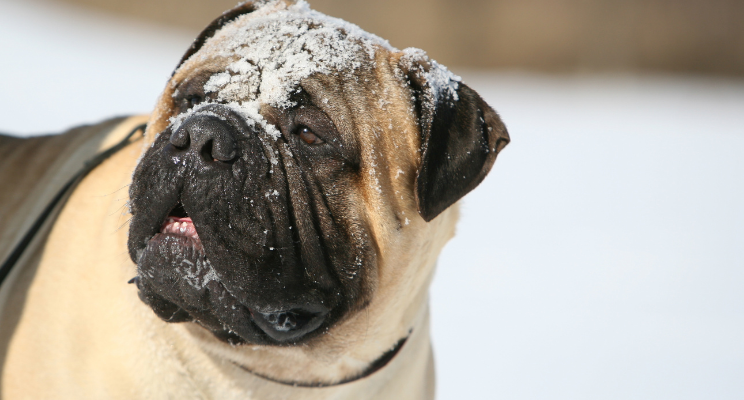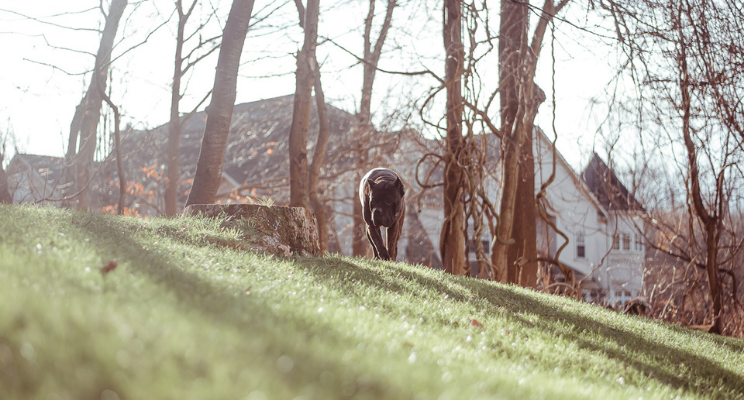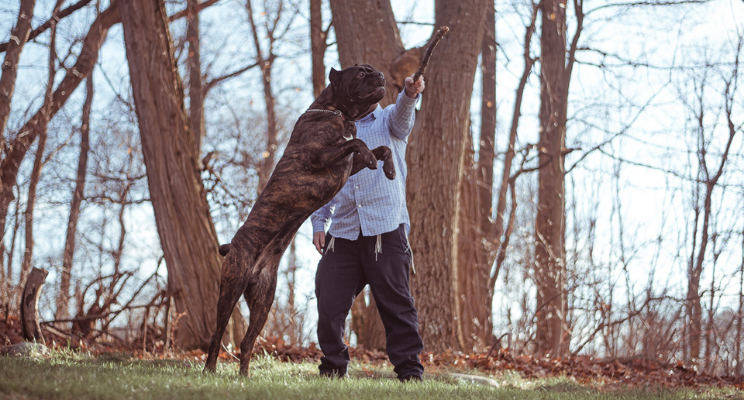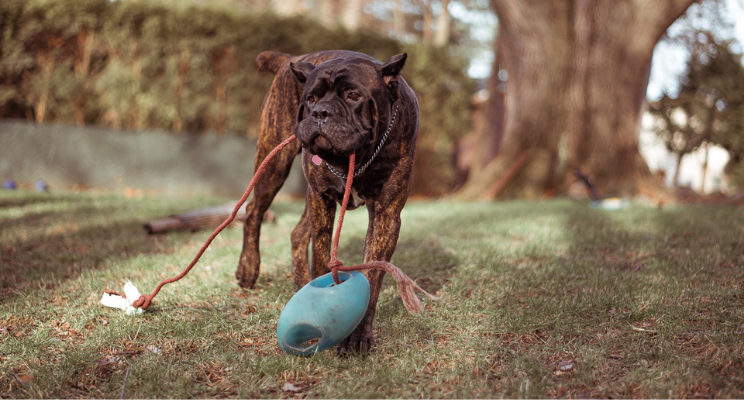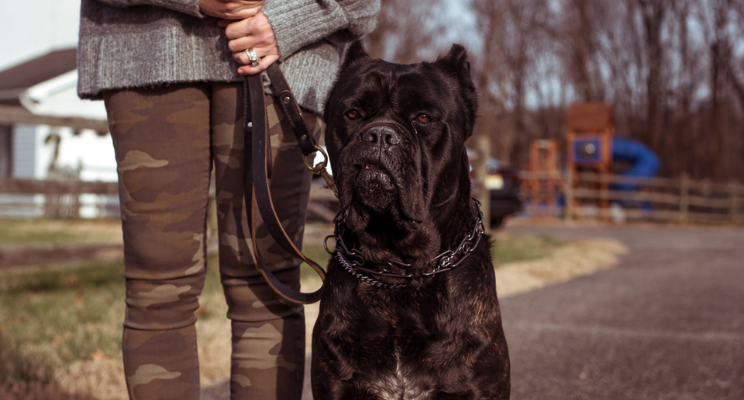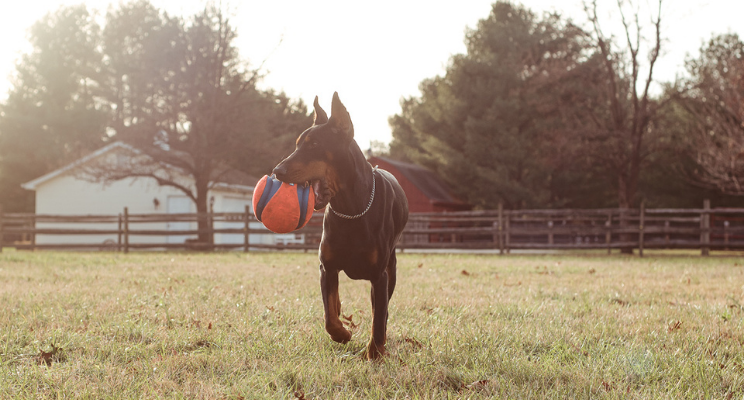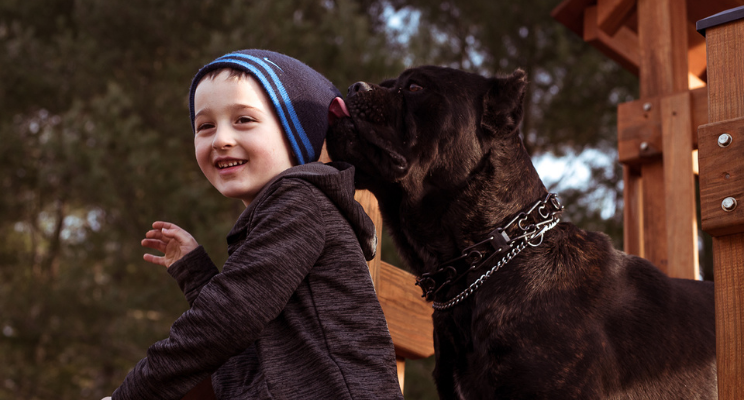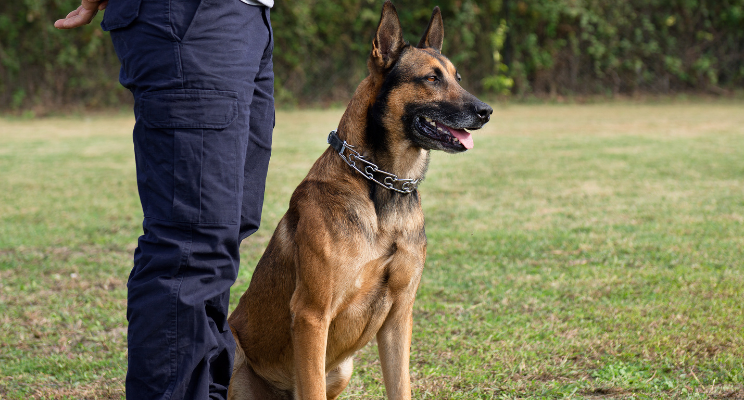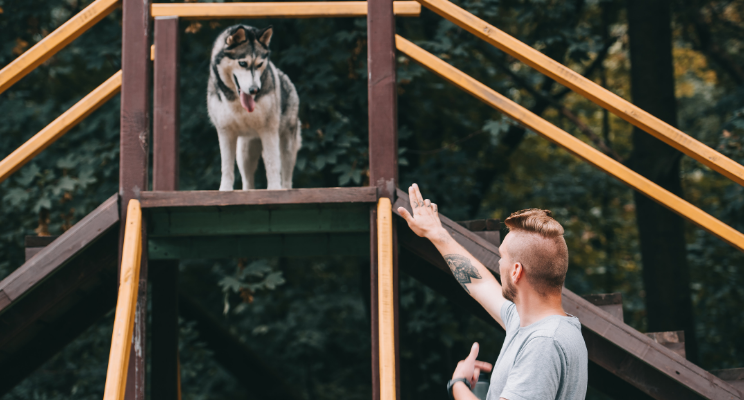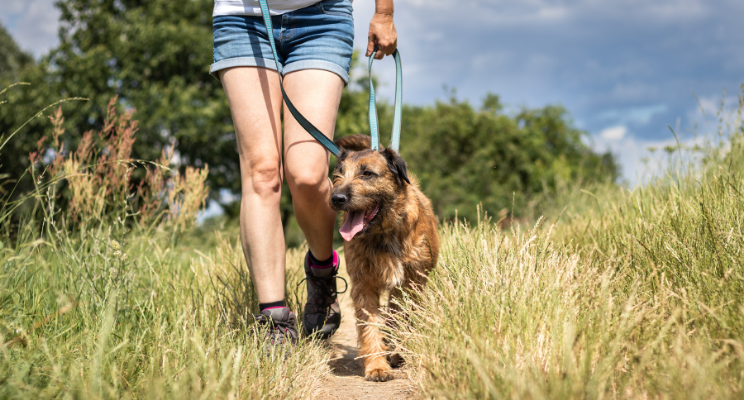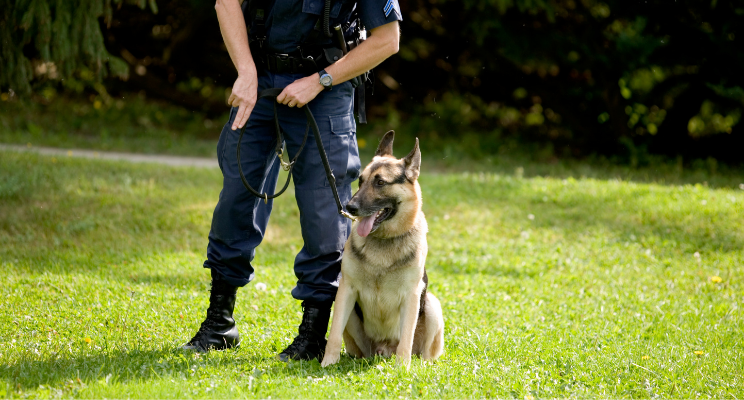There are many reasons to want a protection dog – personal protection, protection of property, or simply knowing when a visitor is at the door. But what about when you’re not experiencing a threat? What happens to your protection dog on a regular day?
Sadly, canines as protectors get placed in an awful light sometimes, when in actuality, the characteristics that make them furious defenders are also the ones that make them wonderful pets. We’ll show you how you can get a lovable pet for the family, and a protector, all in one.
The best protection canines are attentive, courageous, and recognize when to ward off a trespasser. Still, that doesn’t mean they live a ferocious day-by-day life. Give them the preparation they need, and they will do all that they can to ensure you’re protected. In any case, dogs cause you to have a sense of security and offer you a long period of adoration and fondness.
Some canines even perform amazing feats of agility to entertain us. In contrast, others assist people with disabilities, help those who struggle with anxiety and depression, or offer support to children with special needs.
However, the ones we’re referring to are protection dogs.
These canines have an unparalleled love for their people, and they will do pretty much anything to keep them safe while protecting their homes as well.

Do You Need a Protection Dog?
Protection occurs on several different levels, so breeders and trainers use various terms to describe the variable levels of protection a given dog is expected and willing to provide.
For example, most dogs will bark when someone knocks at the door; but that isn’t enough to ward off an intruder or criminal. On the other hand, protection dogs also keep an eye out for danger, but they’re ready to get physical and defend their home or family from threats. In other words, they will bark as most dogs will, but they will also defend their territory if the situation calls for it. For this reason, they must receive specific training to excel in such roles. At Golden State K9, we pride ourselves in our comprehensive training programs that leave your pet ready to protect! We focus on making sure our dogs leave with safe and healthy boundaries. We offer three levels of training packages to make sure your loved ones will be safe and well protected!
Protection Dogs and Families – Are They Safe to Mix?
No matter what size dog you choose, we promise that our trained protection dogs are safe and loving around your children and families.
Protection dogs are trained to:
- Protect (individuals or families). They’re not police dogs used to attack criminals. Instead, they are loving family dogs and loyal pets that faithfully protect when the situation calls for it.
- Calm and obedient to commands. The trained dog will bond well with the entire family while protecting their home.
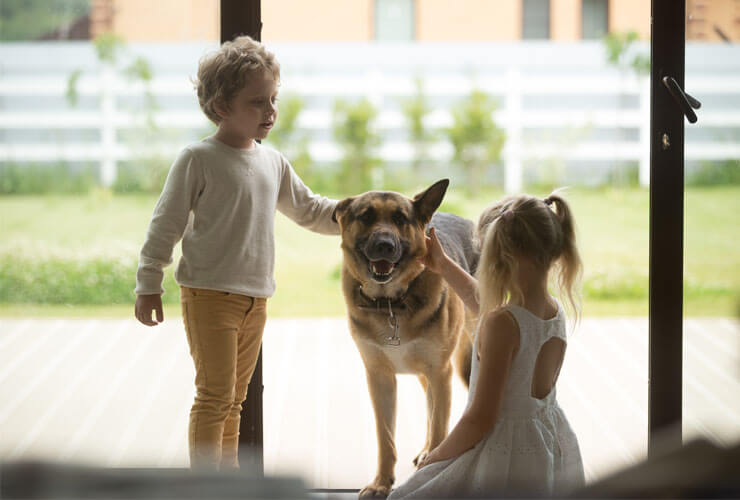
Qualities to Look for in a Good Family Friendly Protection Dog
Some of the most important qualities a good protection dog possesses include the following:
Intelligence – Good protection dogs must be obedient and respond to the most basic commands, such as sit, lay down, stay, and heel. It also helps them determine what is considered a threat or what is non-significant.
Loyalty – Your canine should be loyal to your family.
Courage – Your dog must be brave.
Territorial Instincts – Dogs that strongly identify with their home and are willing to protect it against intruders are better suited for protection work than those who do not mind trespassers.
Warm Nature – All great protection canines are bold despite any threats that come about. Still, they can also be a tail-wiggling heap of face-licking love to their human families.
Protection Dogs
Our dogs are trained to protect, but they will always be your lovable pet! Our desire is always that your protection dog is a strong member of the family, and never like a liability.
Our needs for security, companionship, and loyalty haven’t changed much since the time of Plato and Aristotle, making dogs a popular choice to protect our loved ones and our property.
Protection dogs will bark or, in any case, alert their kin to trespassers and will defend against threats when needed.
Sometimes the best protection dog breeds have an intimidating size and appearance and display intelligence, fearlessness, and loyalty. In contrast, the best owners will begin training when their dog is still a puppy. Here are a few examples of protective dogs that make great family-friendly pets:
- Belgian Malinois
- Cane Corso
- Doberman
- German Shepherd
- Akita
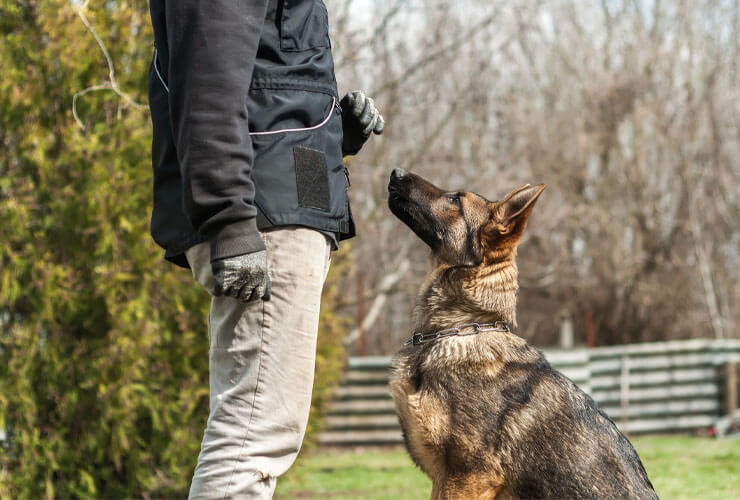
The Benefits of a Protection Dog
Protection dogs are still pets and are just as playful and full of affection as any dog. The difference is that they possess certain skills, which can add to you feeling safe and secure. Plus, they like learning. So, the more you train them, the better they are at protecting you and your family and your property.
- They adapt well to your family life (they can go with your family on vacations, short trips, and errands).
- Great companions for walking or hiking and great protectors.
- Can be professionally trained to obey commands.
- Can be taught to remain calm in the midst of danger.
- Obey on command (rather than attacking at will).
We Us Help
Personal protection dogs should be completely social and impeccably trained to blend into your family and lifestyle. We understand that this can feel like an overwhelming task to know what do his right for you. That’s why we’re happy to step in.
Our ultimate goal at Golden State K9 is to help families acquire the best personal protection dogs. We are committed to training our dogs not just with personal protection but also advanced obedience training options. All of our trainers have over 30 years of experience with protection or guard dogs.
We can assure you that they won’t bite nor bark at their owners. We’ve never had an issue or accidents with our dogs. This is because we prioritize your safety over anything else.
Check our dog training packages or contact us if you have additional questions. We offer nationwide delivery of our protection dogs.
At Golden State K9, we never compromise your safety. Ever. We ensure that all of our protection dogs are trained well to protect you and your entire family in times of trouble. Check out our available dogs page to find the newest member of your family.
